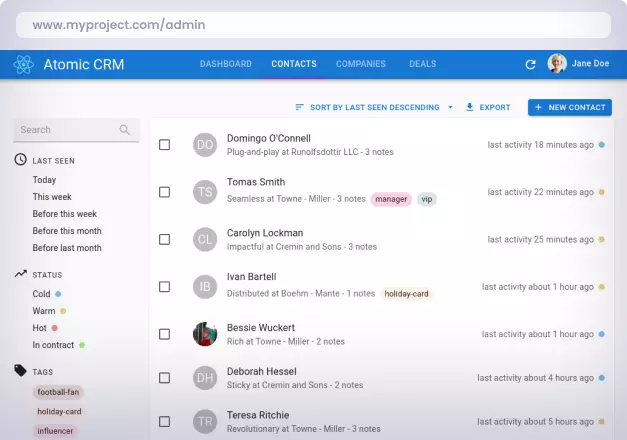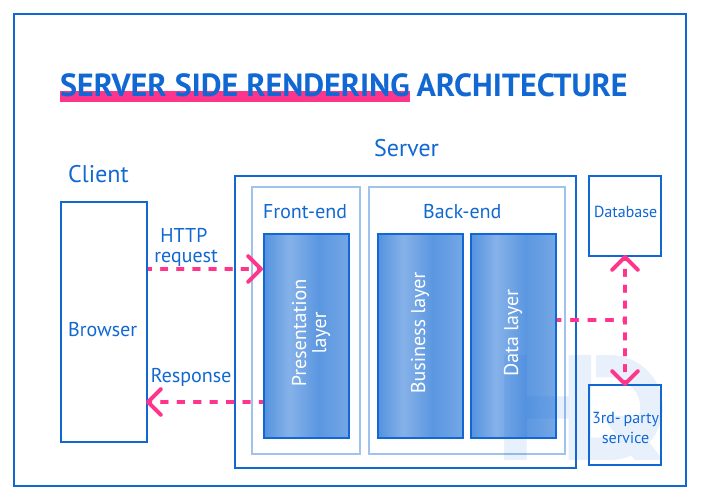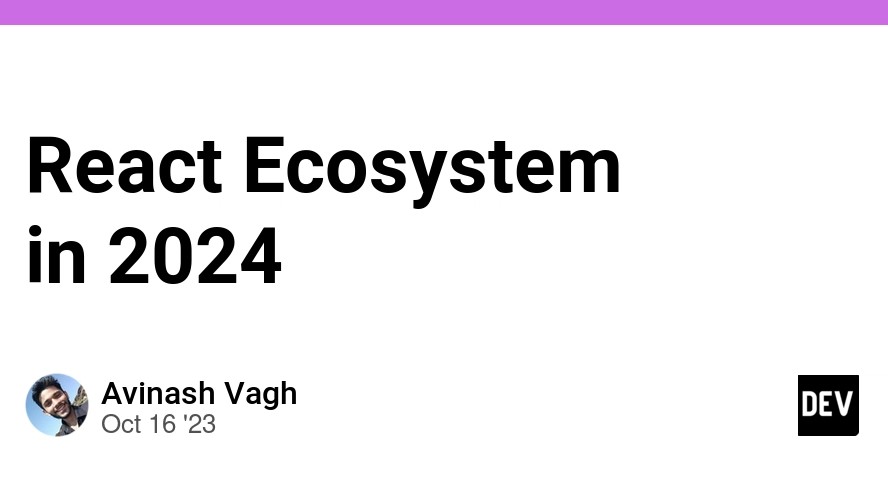In today’s fast-paced digital landscape, the demand for dynamic, real-time, and engaging news platforms has never been higher. Users expect instantaneous updates, interactive features, and a seamless experience across all their devices. For developers tasked with building these applications, the React ecosystem offers a powerful and comprehensive suite of tools to meet these modern demands. From server-rendered web applications for optimal SEO to native mobile apps for on-the-go access, React provides the foundation for creating world-class news experiences.
This article serves as a deep dive into building a sophisticated React News application. We will explore the entire development lifecycle, starting from choosing the right framework and setting up the project. We’ll then cover crucial aspects like efficient data fetching from news APIs, managing application state, and implementing advanced features. Finally, we’ll discuss best practices for performance, testing, and even extending your platform to mobile with React Native. Whether you’re building a niche blog or a large-scale media portal, this guide will provide you with the practical knowledge and code examples needed to succeed.
Laying the Foundation: Choosing Your React Framework
While Create React App (CRA) was once the default starting point for many React projects, modern web applications, especially content-heavy ones like news sites, require more advanced features out of the box. This is where React meta-frameworks come in. They provide solutions for routing, data fetching, and rendering strategies that are critical for performance and Search Engine Optimization (SEO).
Why a Framework? Beyond Create React App
For a news application, SEO is paramount. You want search engines to crawl and index your articles effectively. Client-side rendered (CSR) applications built with CRA can struggle with this, as the initial HTML is often just an empty shell. Meta-frameworks solve this problem with Server-Side Rendering (SSR) and Static Site Generation (SSG).
- Next.js: The most popular React framework, Vercel’s Next.js offers a hybrid approach, allowing you to choose the best rendering strategy on a per-page basis. This makes a Next.js News app incredibly flexible—you can statically generate article pages that don’t change often and server-render the homepage for the latest updates.
- Remix: Focused on web fundamentals, Remix leverages web standards like the Request/Response API. A Remix News application excels at handling data mutations (like comments or user actions) and provides a robust, resilient user experience.
- Gatsby: If your news site is more like a blog with content that is updated less frequently, Gatsby is an excellent choice. A Gatsby News site built with its SSG-first approach will be incredibly fast and secure.
For this guide, we’ll focus on Next.js due to its versatility and widespread adoption.
Setting Up a Next.js Project
Getting started with Next.js is straightforward. You can create a new project with a single command, which sets up a well-structured application with TypeScript support, routing, and other essentials ready to go.
# Create a new Next.js application
npx create-next-app@latest react-news-app --typescript --eslint --tailwind --src-dir --app
# Navigate into the project directory
cd react-news-app
# Run the development server
npm run devThis command scaffolds a new project using the App Router, the latest standard for building Next.js applications. The folder structure inside src/app/ directly maps to your application’s routes, making navigation intuitive to manage. With this foundation, we’re ready to start fetching and displaying news content.
Fetching and Displaying News Content
A news application is defined by its content. The next critical step is to efficiently fetch data from a backend service or a third-party news API (like NewsAPI, The Guardian API, etc.) and render it for the user. How you fetch this data has a significant impact on performance and user experience.

Data Fetching Strategies in Next.js
Next.js provides powerful, built-in data fetching mechanisms that integrate directly with its rendering strategies:
- Server Components (Default in App Router): You can fetch data directly within your React components on the server. This is ideal for fetching the initial, non-interactive content of a page, ensuring fast load times and excellent SEO.
- Static Site Generation (SSG): Using
generateStaticParams, you can pre-render pages at build time. This is perfect for individual article pages whose content is unlikely to change frequently. - Client-Side Fetching: For highly dynamic data, like a live news ticker or personalized content, you can still fetch data on the client using hooks like
useEffector a dedicated data-fetching library.
Integrating a Data Fetching Library
While Next.js’s built-in fetching is powerful, managing complex server state—caching, background refetching, optimistic updates, and error handling—can become complicated. This is where libraries like React Query (now TanStack Query) shine.
Using a library for React Query News development simplifies data fetching logic, improves performance by reducing redundant network requests, and provides a much better user experience. It treats server data as a first-class citizen, distinct from client state.
Here’s an example of creating a component to fetch and display a list of articles using React Query within a Next.js client component.
'use client';
import { useQuery } from '@tanstack/react-query';
// A mock function to fetch news articles
const fetchNewsArticles = async () => {
const response = await fetch('https://api.example.com/news');
if (!response.ok) {
throw new Error('Network response was not ok');
}
return response.json();
};
export default function ArticleList() {
// Use the useQuery hook to fetch and manage the data
const { data, error, isLoading, isFetching } = useQuery({
queryKey: ['articles'],
queryFn: fetchNewsArticles,
staleTime: 5 * 60 * 1000, // Cache data for 5 minutes
});
if (isLoading) return <div>Loading articles...</div>;
if (error) return <div>An error occurred: {error.message}</div>;
return (
<div>
<h1>Latest News {isFetching ? '(Updating...)' : ''}</h1>
<ul>
{data?.articles.map((article) => (
<li key={article.id}>
<a href={article.url} target="_blank" rel="noopener noreferrer">
{article.title}
</a>
</li>
))}
</ul>
</div>
);
}For applications using GraphQL, libraries like Apollo Client News or Relay News offer similar benefits with added features tailored for the GraphQL ecosystem, such as normalized caching and automatic UI updates after mutations.
Advanced Features: State Management and Interactivity
As your news application grows, you’ll need to manage state that is shared across different components. This could include the current user’s authentication status, theme preferences (e.g., light/dark mode), or saved articles. You’ll also want to add interactive elements like forms for newsletter sign-ups or comment sections.
Managing Global State
While React’s built-in Context API is suitable for simple state sharing, it can lead to performance issues in complex apps due to unnecessary re-renders. This is where dedicated state management libraries come in.
The classic choice has long been Redux News, which provides a predictable and robust state container. However, for many modern applications, lighter-weight solutions offer a more ergonomic developer experience:
- Zustand: A small, fast, and scalable state management solution that uses a simple hook-based API. A Zustand News setup is minimal and doesn’t require wrapping your app in context providers.
- Jotai: An atomic state management library. A Jotai News approach allows you to manage state in small, isolated pieces (atoms), which can lead to more optimized re-renders.
- Other popular options include Recoil News and MobX News.
Here’s a practical example of creating a simple theme store with Zustand to allow users to toggle between light and dark modes.

import { create } from 'zustand';
// 1. Define the store's state and actions
const useThemeStore = create((set) => ({
theme: 'light', // Initial state
toggleTheme: () =>
set((state) => ({
theme: state.theme === 'light' ? 'dark' : 'light'
})),
}));
// 2. Create a component that uses the store
function ThemeToggleButton() {
// Access state and actions from the store
const { theme, toggleTheme } = useThemeStore();
return (
<button onClick={toggleTheme}>
Switch to {theme === 'light' ? 'Dark' : 'Light'} Mode
</button>
);
}
// 3. Use the component anywhere in your app
function Header() {
const theme = useThemeStore((state) => state.theme);
return (
<header className={theme === 'dark' ? 'dark-theme' : 'light-theme'}>
<h1>React News</h1>
<ThemeToggleButton />
</header>
);
}Building Interactive UI and Forms
To engage users, your news app will need interactive elements. For handling forms, libraries like React Hook Form News or Formik News are essential. They simplify form state management, validation, and submission, saving you from writing boilerplate code. For creating fluid and appealing animations, consider libraries like Framer Motion News or React Spring News, which make it easy to add delightful micro-interactions to your UI.
Taking it to Mobile and Ensuring Quality
A successful news platform needs to be accessible everywhere. This means having a strong mobile presence. Additionally, maintaining high quality across all platforms requires a robust testing strategy.
Building a Mobile News App with React Native
One of React’s biggest advantages is the ability to leverage your skills to build native mobile applications with React Native. A React Native News app allows you to share logic and even some UI components with your web application, significantly reducing development time.
Frameworks like Expo News streamline the development process even further by providing a managed workflow, a suite of essential APIs (like camera and notifications), and simplified build/deployment processes. To build the UI, you can use powerful component libraries:
- React Native Paper News: A library that provides Material Design components.
- NativeBase News or Tamagui News: Cross-platform UI kits that allow you to write code once and deploy it on both web and mobile.
Navigation in a mobile app is handled by libraries like React Navigation News, which provides a complete and extensible solution for managing screens and navigation flows.
A Robust Testing Strategy
Ensuring your application is bug-free and reliable is non-negotiable. A comprehensive testing strategy should include different levels of testing:
- Unit & Component Testing: Use Jest News as the test runner and React Testing Library News to test individual components in isolation. This ensures that each piece of your UI behaves as expected.
- End-to-End (E2E) Testing: Tools like Cypress News or Playwright News automate a real browser to simulate user journeys through your entire application, from logging in to reading an article.
- Mobile App Testing: For React Native, Detox News is the standard for high-level gray box E2E testing, ensuring your mobile app works correctly on simulators and real devices.
Here is a simple component test using Jest and React Testing Library to verify that an article headline renders correctly.
import { render, screen } from '@testing-library/react';
import ArticleHeadline from './ArticleHeadline';
import '@testing-library/jest-dom';
describe('ArticleHeadline', () => {
it('renders the headline text correctly', () => {
const headlineText = 'Breaking News: React Conquers the Web';
// Render the component with a prop
render(<ArticleHeadline text={headlineText} />);
// Find the element with the headline text
const headlineElement = screen.getByRole('heading', { name: headlineText });
// Assert that the element is in the document
expect(headlineElement).toBeInTheDocument();
});
});Conclusion: Assembling Your Modern News Platform
Building a modern news application is a complex but rewarding challenge. The React ecosystem provides a mature, flexible, and powerful set of tools to tackle every aspect of the project. By starting with a solid foundation like Next.js, you gain immediate advantages in performance and SEO. Leveraging specialized libraries for data fetching (React Query), state management (Zustand), and testing (React Testing Library, Cypress) allows you to build features faster and with greater confidence.
The journey doesn’t end with the web. With React Native and Expo, you can extend your reach to mobile platforms, creating a truly unified experience for your readers. The key takeaway is to choose the right tool for the job and embrace the component-based architecture that makes React so effective. By following the principles and practices outlined in this guide, you are well-equipped to build a fast, reliable, and engaging React News application that can stand out in a competitive digital world.











